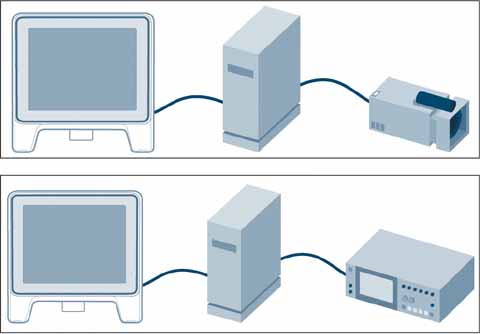Capture and Storage Systems
Regardless of whether you configure your own system or purchase one ready-made, it’s helpful to think about capture and storage before you get started. Decisions you make during the process of importing material to your computer from your tapes shape the outcome of your project. If you employ an organized capture and storage system, you’ll have a much easier time finding and keeping track of your footage later on.
Capture equipment
Capturing DV footage involves playing the material on your deck or camera (Figure 10-1), and then digitally importing the material to your computer via FireWire, also known as an IEEE 1394 connection. It also involves repeatedly fast-forwarding and rewinding through the tape to select the individual shots you want. Video decks were made to fast-forward and rewind without breaking down; cameras were not. Rewinding a tape in your camera can lead to accidentally damaging the tape as it runs through the camcorder at high speeds, and continually fast-forwarding or rewinding can burn out your camera’s internal workings (see “The Vulnerability of Any Recorded Media” in Chapter 1). DV decks aren’t cheap—they can easily cost more than $1,500—but if using one extends the life of a camera you recently paid $3,000 or $4,000 to purchase, it’s a good investment.

Figure 10-1. A computer connected to a DV camera and a computer connected to a DV ...
Get DV Filmmaking now with the O’Reilly learning platform.
O’Reilly members experience books, live events, courses curated by job role, and more from O’Reilly and nearly 200 top publishers.

